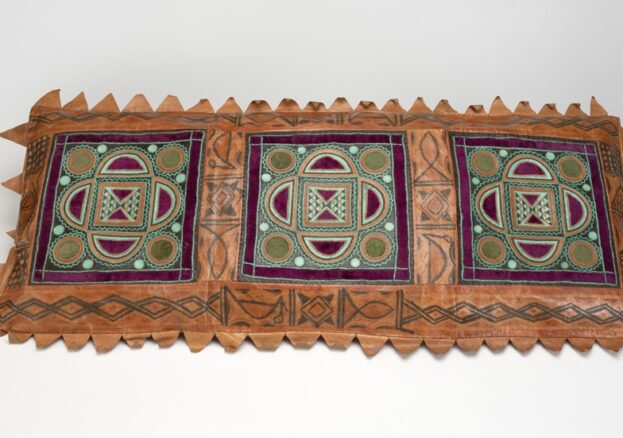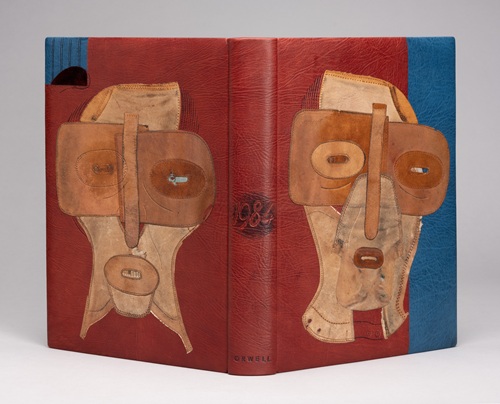
For over a century, the leathers of Northern Nigeria travelled across oceans, wrapping some of the world’s finest books — yet the hands that made them were forgotten. The Fitzwilliam Museum’s exhibition Bound Together: Leather from Northern Nigeria is finally giving those makers their place in the story.
The display, which runs until February 2026, uncovers the remarkable skill of Northern Nigerian tanners and leatherworkers whose work travelled across continents yet whose names were rarely recorded. Many of the objects on show have spent more than 100 years in museum storage, unseen and unacknowledged.
By the late nineteenth century, goatskins from northern Nigeria were among the most prized materials in the world of fine bookbinding. Their smooth texture, durability and colour made them the preferred choice for designers in Britain and the United States who created elegant and intricate bindings for collectors and institutions. Yet while those designers were celebrated, the Nigerian craftsmen and women whose tanning and dyeing techniques made such beauty possible were rarely credited and often described in colonial writing as “primitive.”

Dr Eva Namusoke, Senior Curator of African Collections Futures and curator of the display, says the exhibition is part of a wider effort to confront these silences. “We find countless examples like this among the African objects at the University. African resources, knowledge and craft have been a part of this institution for a very long time. This display is just the start of uncovering those narratives.”
The exhibition forms part of the University of Cambridge’s African Collections Futures project, which aims to reframe how African and Africa-related collections are understood and presented. It reveals how African skill and technology appear throughout Cambridge’s collections, from leather and textiles to pigments, instruments and prints.
Bound Together features objects drawn from across the University, including the Museum of Archaeology and Anthropology, the Fitzwilliam’s own holdings, Cambridge University Library and Cambridge University Press. It includes Nigerian leathers showing traditional tanning and dyeing methods, British designer bindings made with Nigerian goatskins by Edgar Mansfield, Sybil Pye, Jeff Clements and Trevor Jones, and contemporary Nigerian leatherwork, including a modern designer handbag, linking the story to the present day.
Among the highlights is a century-old saddlebag, its geometric cut-outs revealing delicate layers of colour beneath, a manuscript cover that echoes the abstract forms and geometric symmetry of Islamic art, and a cushion case dyed in vivid shades using pigments made from local plants and minerals. Even a pair of riding boots, stored flat for more than a century, has been carefully restored to its original shape and finish.
Most of the pieces are attributed to the Hausa people, the largest ethnic group in Nigeria, whose craftsmanship and design traditions have long been admired across West Africa. Their artistry, shaped by trade, faith and cultural exchange, produced objects that combined utility and beauty in equal measure. Yet museum records from the colonial era rarely mention their names or how their works were collected.
By placing these makers at the centre of the story, Bound Together challenges the silence that has long surrounded them. It invites visitors to see these objects not simply as museum pieces but as works of imagination, intelligence and identity — the products of skilled people whose influence travelled far beyond their homeland.
Bound Together: Leather from Northern Nigeria runs until 8 February 2026 at the Fitzwilliam Museum, Trumpington Street, Cambridge. More information: www.fitzmuseum.cam.ac.uk.
